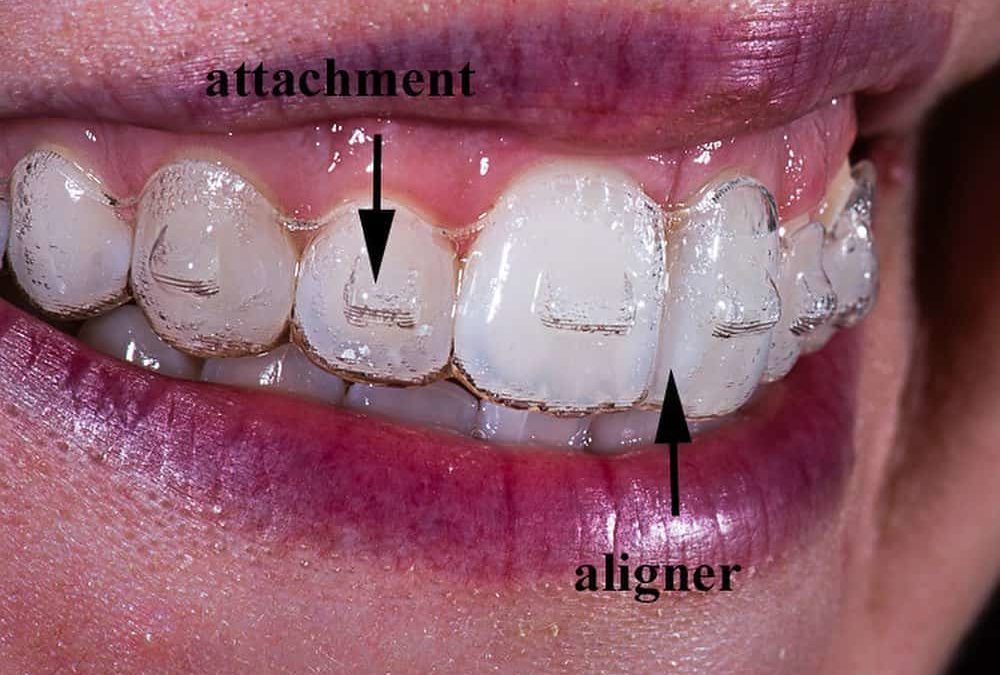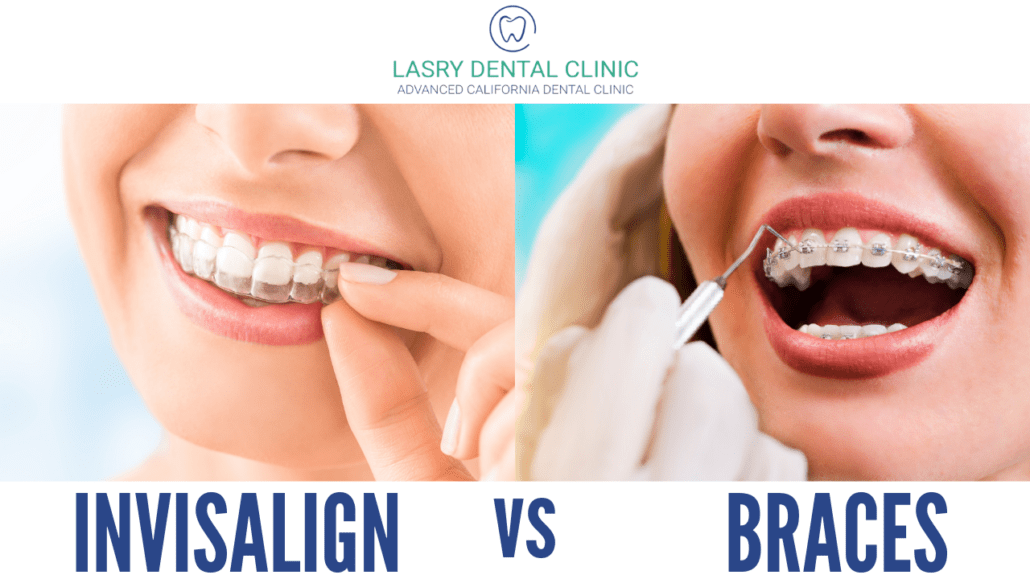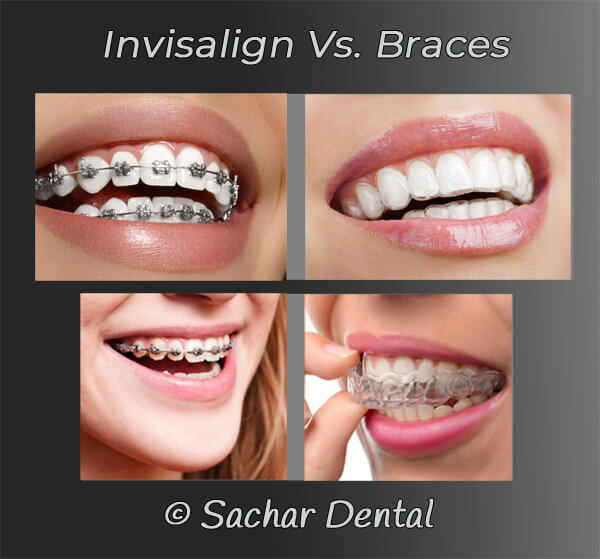Invisalign vs. Typical Braces: Which Alternative Is Right for You?
When thinking about orthodontic treatment, the option between Invisalign and typical braces provides numerous crucial variables that merit mindful examination. Invisalign provides a discreet alternative with detachable aligners, while traditional dental braces provide a much more noticeable yet reliable service for extreme misalignment. Each choice incorporates distinct benefits and drawbacks associated with appearances, comfort, treatment duration, and expense. Comprehending these nuances is crucial for making a notified choice that aligns with your personal choices and way of life. The inquiry remains: which option will best meet your orthodontic demands and expectations?
Review of Therapy Alternatives

On the other hand, traditional braces consist of metal braces and cords that are bonded to the teeth. This technique uses continual pressure in time to achieve alignment. While effective for complicated orthodontic concerns, typical braces need routine check outs for changes and can position difficulties in keeping dental hygiene as a result of the difficulty of cleansing around wires and braces.
Both choices have their advantages, and the option typically pivots on particular dental conditions, way of life choices, and person conformity. Ultimately, consulting an orthodontic specialist is vital for figuring out the most appropriate therapy plan customized to individual requirements. Understanding the nuances of each option can substantially affect the overall success of orthodontic therapy.
Visual Factors To Consider
A significant factor affecting the selection between Invisalign and conventional braces is the aesthetic allure each therapy supplies. Invisalign aligners are crafted from clear plastic, making them virtually unseen when worn. This very discreet look is specifically interesting grownups and young adults that might feel awkward about their orthodontic treatment. The capacity to preserve an all-natural smile throughout the positioning process can significantly boost the client's self-confidence in social and expert settings.
In contrast, conventional dental braces include metal braces and cords, which can be a lot more visible. While developments in orthodontic innovation have actually caused the development of smaller braces and tinted elastics, typical braces still keep a more noticeable account. For some people, the visibility of braces might hinder them from looking for required treatment.
Inevitably, the option between Invisalign and typical dental braces may depend upon personal choices regarding aesthetics. Patients that focus on discernment usually favor Invisalign, while those who are much less concerned regarding visibility may select typical braces. Comprehending the visual implications of each choice is essential for making an educated decision that straightens with one's lifestyle and preferences.
Comfort and Convenience

In terms of benefit, Invisalign aligners are detachable, making it possible for clients to appreciate their favorite foods without limitation and keep ideal dental health. Brushing and flossing are streamlined, as the aligners can be taken out during these routines, whereas standard braces require mindful maneuvering around wires and brackets.
In contrast, traditional dental braces necessitate normal modifications, making them less practical for those with active timetables. Overall, the comfort and ease of Invisalign make it an appealing selection for numerous people looking for orthodontic treatment.
Treatment Period and Performance
While both Invisalign and conventional braces work in remedying oral imbalances, the period of treatment can vary dramatically in between both choices. Commonly, Invisalign therapy can take anywhere from 12 to 18 months, depending on the intricacy of the case. The clear aligners work by gradually moving teeth right into their desired placements, and regular follow-ups with an orthodontist aid make sure progress stays on course.
On the other hand, standard braces often call for a longer dedication, usually ranging from 18 months to three years. This is due to their fixed nature and making use of cables and braces, which can be a lot more effective for complicated cases and severe imbalances (Invisalign). The treatment effectiveness of traditional dental braces is well-documented, as they allow for precise modifications and better control over tooth movement
Eventually, the choice in between Invisalign and traditional dental braces might depend upon both the expected therapy period and the specific dental problems handy. Consulting with an orthodontist is critical, as they can give customized referrals based upon private requirements, making check out here sure the picked technique aligns with desired outcomes and timeframes.
Price Contrast and Insurance Policy Options
Price plays a considerable role in websites the decision-making process for people taking into consideration orthodontic treatment, whether going with Invisalign or typical dental braces. Generally, the price of Invisalign varieties from $3,000 to $8,000, while conventional dental braces commonly cost in between $2,000 and $6,000. Factors influencing these costs consist of the complexity of the instance, the duration of treatment, and geographical location.
Insurance insurance coverage can substantially impact out-of-pocket costs. Many oral insurance strategies supply partial coverage for orthodontic treatments, but the specifics can differ commonly. It is crucial for individuals to examine their insurance policy plans to identify the degree of protection for either option. Typically, standard braces may be extra often covered by insurance coverage strategies compared to Invisalign, which some insurance companies categorize as an aesthetic treatment.
Furthermore, numerous orthodontic techniques use flexible payment plans, making both therapy choices a lot more accessible. Clients should ask about prospective funding options and discount rates for in advance settlements. Evaluating the overall expense, consisting of insurance advantages and layaway plan, is crucial for making an educated decision that straightens with both aesthetic choices and budget plan considerations.

Final Thought
In summary, the selection between Invisalign and conventional braces rests on numerous variables, consisting of visual preferences, convenience, treatment period, and price. Invisalign offers a discreet, removable choice that helps with oral health and dietary adaptability, while traditional dental braces might be much more appropriate for complex oral problems and frequently come at a reduced cost factor. Ultimately, appointment with an orthodontist is vital to examine individual conditions and identify the most proper therapy alternative for accomplishing optimal dental positioning.
When taking into consideration orthodontic treatment, the choice in between Invisalign and traditional braces presents numerous important aspects that warrant mindful analysis.Comparing Invisalign and conventional braces reveals unique treatment options for orthodontic modification.While both Invisalign and standard braces are efficient in dealing with dental misalignments, the duration of treatment can vary significantly between the two options.Expense plays a substantial role in the decision-making procedure for individuals considering orthodontic treatment, whether opting for Invisalign or standard dental braces.In summary, the choice in between Recommended Site Invisalign and conventional braces hinges on several variables, including visual preferences, convenience, therapy duration, and cost.
Comments on “Invisalign for Teenagers: A Modern Solution to Straightening Young Smiles”